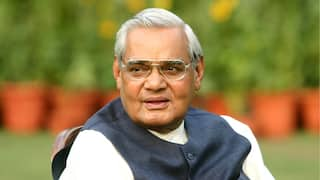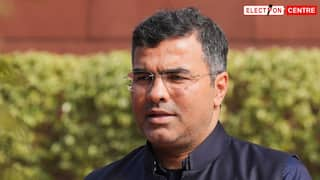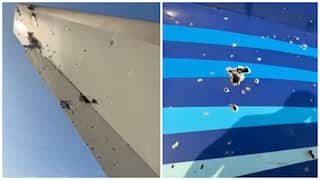The Role Of Physical Education In Primary Schools
Physical education is commonly seen as a fun break from the typical classroom routine, but it's a learning journey in its own right. Let's understand why:

It's a sight familiar to many – a parade of young children in colourful PE kits, heading out to the school's sports field or gymnasium, laughter in the air, energy everywhere. Physical education (PE) in primary school settings is more than just a time for children to burn off energy; it holds so many more benefits that extend beyond the playground. From fostering teamwork to encouraging a lifelong love for fitness, let's explore the indispensable role PE plays in primary schools, especially international schools in Singapore.
Physical Education: More Than Just Play
PE is commonly seen as a fun break from the typical classroom routine, but it's a learning journey in its own right. Let's understand why:
- Structured Learning: PE isn’t just about free play. It’s structured, with educators having specific goals for each session, from motor skills development to teaching specific sports techniques.
- Broad Spectrum of Activities: The range of activities within a PE curriculum is vast. From traditional sports to contemporary dance routines, there's something for every child's preference.
The Multifaceted Benefits of PE
Physical education in primary school is not just beneficial; it's pivotal. Let's break down its myriad advantages:
- Physical Fitness and Health: The most apparent benefit is that PE promotes cardiovascular health, strength, flexibility, and overall physical wellness. For instance, When Jun, a young learner at aninternational school in Singapore, started his primary education, he was quite sedentary. But PE classes introduced him to badminton, which he took a liking to, resulting in improved physical stamina and a new weekend hobby.
- Development of Motor Skills: Motor skills, both fine and gross, are honed through various PE activities.
- Social Skills and Teamwork: Sports and group activities cultivate cooperation, patience, and communication among peers.
- Emotional Well-being: Physical activity releases endorphins, the body's natural mood lifters. Regular PE sessions can reduce anxiety, and stress, and even combat early signs of depression.
- Life Skills: Through wins and losses, children learn resilience, perseverance, and the importance of practice and dedication.
PE and Academic Performance: A Symbiotic Relationship
Many research studies have elucidated the positive relationship between regular physical activity and improved academic performance. Here’s what you should know:
- Better Concentration: Regular physical activity is linked to enhanced attention spans and focus, which is crucial for subjects that require prolonged concentration.
- Improved Cognitive Abilities: Certain activities, like dance or gymnastics, need students to remember sequences or routines, thus sharpening their memory.
- Stress Relief: Physical exertion helps manage school-related stress, making students more receptive to classroom teachings.
Adapting PE for Inclusive Education
Every child, regardless of their physical or mental abilities, deserves quality PE experiences. Here's how modern schools are ensuring inclusivity:
- Modified Activities: Tailoring games and activities to be inclusive ensures every child gets an equal opportunity.
- Assistive Equipment: For children with mobility challenges, schools are incorporating equipment that makes participation possible and enjoyable.
- Professional Training for Educators: Educators are trained to handle a diverse group of students, ensuring individual attention and fostering an inclusive environment.
Physical Education vs Sports: Drawing the Line
Often, physical education and sports are used interchangeably. However, they have distinct objectives:
- Content and Curriculum: PE has a broader curriculum, encompassing various activities, while sports often pertain to specific disciplines like football, basketball, etc. For instance, Zara, studying at a localschool, learnt juggling in her PE class. This wouldn’t typically be part of sports coaching.
- Aims and Outcomes: PE aims at overall development, whereas sports often target mastering a particular game and competing at various levels.
- Inclusion: PE is inclusive, seeking to engage every student. Sports, especially at higher levels, can be selective, focusing on students with advanced skills.
Balancing Screen Time with Physical Activity
In an increasingly digital way of living, the challenge for many educators and parents is to balance screen time with physical activity.
- Set Clear Boundaries: Limiting daily screen time and setting specific hours for outdoor play can help in striking a balance. Allow them an hour of tablet time after they return from their primary school. After that, encourage them to play outside with his friends. Or better, go out and play along with them.
- Incorporate Movement with Technology: Interactive games which require movement, dance platforms, or fitness apps for children can merge tech with physical activity.
- Educate on Consequences: Conversations about the importance of physical activity and the potential health issues due to prolonged sedentary behaviour can be effective.
Role of Families in Promoting Physical Activities
While schools play a pivotal role, the family’s involvement is equally crucial:
- Be Role Models: Children tend to emulate adults. If they see their family members being active, they are likely to follow suit.
- Family Activities: Weekend family outings could be centred around physical activities like cycling, hiking, or swimming.
- Value Physical Education: Parents can foster an environment where PE is given as much importance as academics. Engaging in conversations about their PE classes and encouraging participation in school sports can be beneficial.
Importance of Proper Equipment and Infrastructure
For PE to be effective and safe, appropriate infrastructure is imperative:
- Safety First: Proper sports gear, be it shoes, helmets, or knee pads, can prevent potential injuries.
- Quality Infrastructure: Well-maintained playgrounds, courts, and equipment in primary schools, including those like Singapore International School, ensure activities are conducted smoothly and safely.
- Upgradation: With new sports and activities constantly emerging, it's essential for schools to upgrade their facilities periodically.
The Future of Physical Education
The world is evolving, and so is the realm of PE. What does the future hold?
- Integration with Technology: Wearable fitness trackers, virtual reality sports, and apps that monitor progress are all making their way into the PE curriculum.
- Holistic Approach: PE will encompass mental well-being, with activities like yoga and mindfulness meditation becoming integral parts.
- Personalisation: Recognising that each child is unique, future PE sessions will be more tailored to individual needs and preferences.
Physical education is an irreplaceable component of the primary school curriculum. It's not just about keeping children physically active but about moulding them into resilient, empathetic, and well-rounded individuals. As you scout for the ideal educational institution, perhaps a good international school in Singapore would be good your child’s overall development. This is because they pay express attention to their PE curriculum, ensuring children reap the myriad benefits holistic learning offers.
(Disclaimer: ABP Network Pvt. Ltd. and/or ABP Live does not in any manner whatsoever endorse/subscribe to the contents of this article and/or views expressed herein. Reader discretion is advised.)


















